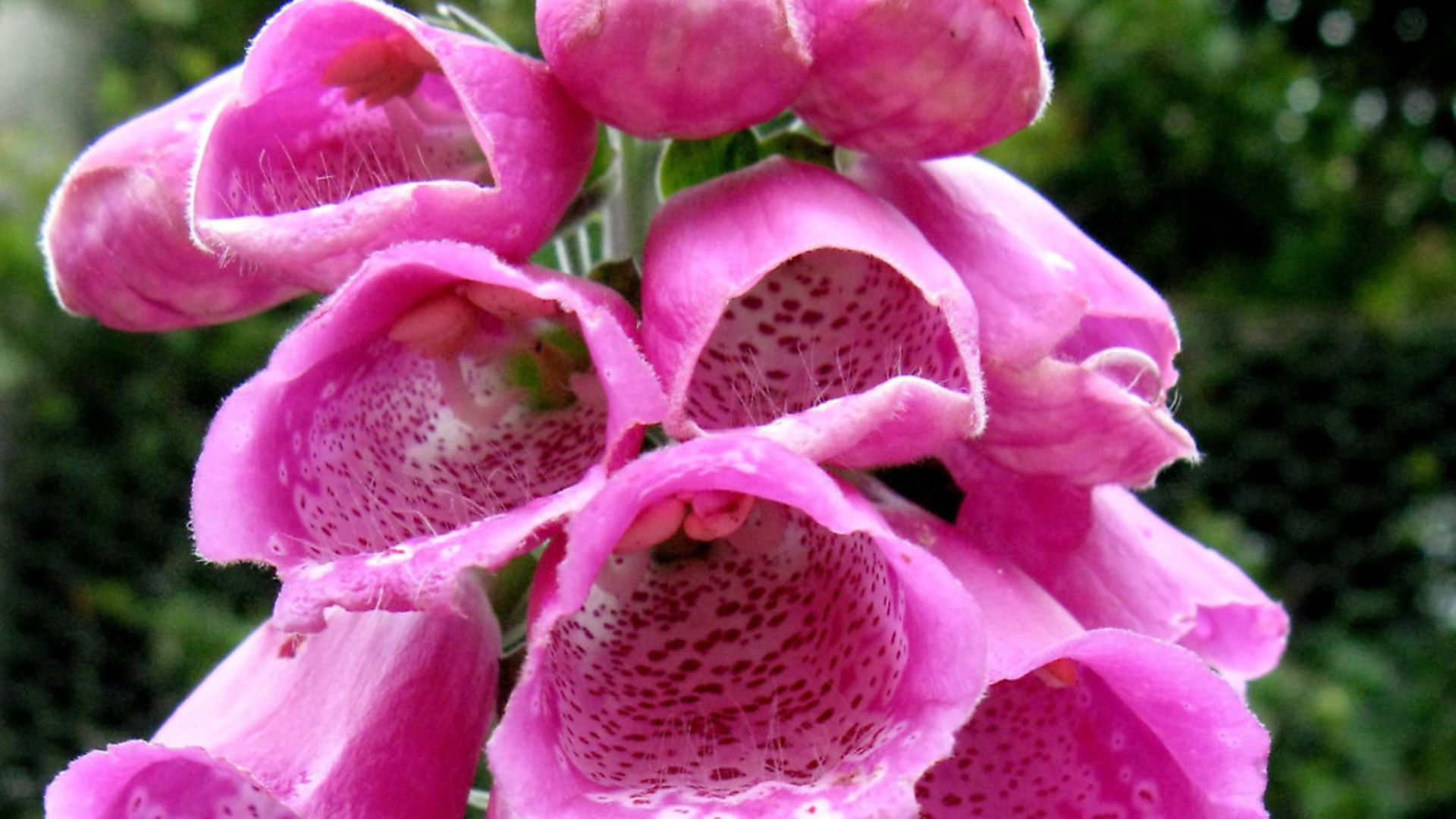
PETER TRUDGILL examines the etymological roots of this beautiful plant.
It is not a totally straightforward matter to explain how the flower we call the foxglove got its name. We can, though, at least figure out where the glove part comes from: the flowers look like the fingers of gloves; and small fingers, as children know, can be inserted into them.
In many languages, there is a more direct link between the plant’s name and the word for ‘finger’. In Greek, one name for the foxglove is daktylís, from dáchtilo, ‘finger’. The Spanish is dedalera, from dedo, ‘finger’ (the Portuguese is dedaleira, the Catalan didalera). In Albanian the name is lule gishti, with lule meaning ‘flower’ and gisht ‘finger’.
The Latin name of the plant is digitalis – the modern Italian is digitale. This name, digitalis, is now most frequently used to refer to the important heart drug which is derived from the foxglove; but the word originally meant ‘a finger width’, from digitus, ‘finger’. We have borrowed this word, in the form of digit, into modern English, where it has come to mean not only ‘finger’ but ‘a whole number less than 10’, presumably because of our 10 anatomical digits. And of course these days we most often hear the word digital – as opposed to analogue – in connection with ‘the usage of numerical digits in electronics’.
Other languages have been a little more imaginative in developing their words for Digitalis purpurea, and related flowers. The Polish for foxglove is naparstnica, from naparstek, ‘thimble’ (na+parst is ‘on+finger’). Hungarian gyuszuvirág also means ‘thimble flower’. The Dutch word vingerhoedskruid literally means ‘finger hat (=thimble) herb’; and German Fingerhut, ‘finger hat’, signifies both a thimble and a foxglove. The Finnish for foxglove is sormustinkukka, ‘thimble flower’, and Swedish fingerborgsblomma has the same meaning, with fingerborg literally meaning ‘finger-castle’.
These continental thimble terms all relate in a rather transparent way to the covering or protecting of fingers. But English thimble – an Old English word, first recorded around 1000 AD – is historically derived from thumb, even though people who use thimbles when sewing more often than not put them on their index finger rather than their thumb.
Other languages’ words for foxgloves can be enjoyably more whimsical than those relating rather prosaically to fingers and thimbles. For example, another Greek word for foxglove is chelidonó-horto, ‘swallow plant’: there was apparently an ancient belief that the flowers bloomed when the swallows arrived from the south and withered away again when the birds departed for the winter. (It seems, though, that this Greek term is more often used with reference to the flowers we call celandines – an English name which is itself ultimately derived from Greek chelidon, ‘swallow’.)
Even more delightful is the Scottish Gaelic word for foxglove, lus nam ban-sìth: lus means ‘plant’ and a ban-sìth is ‘female fairy’, so it means ‘the fairy women’s plant’. (Many people will know ban-sìth in its anglicised form, banshee.) Then there is the lovely Welsh flower name bysedd y cwn ‘dog-fingers’. Dogs don’t have fingers, of course, but then neither do foxes. Which brings us back to the mystery of the origins of the English word.
We can understand the ‘glove’ element in foxglove. But why would anybody think that the flower had anything to do with foxes? And we really are talking about foxes here: there is no distortion of some other word involved – our Anglo-Saxon forbears actually did call the flower foxes glófa. Did this have something to do with the colour of the flowers; or the fact that foxgloves grew in wooded areas that foxes frequent? Or did our English ancestors fantasise that small foxes went around sticking their paws into digitalis flowers? If so, they seem not to have been alone in being fanciful about foxes. Some of our Scandinavian cousins must have had the same kind of flights of fancy: the Norwegian word for foxglove is revebjelle, ‘fox bell’.










